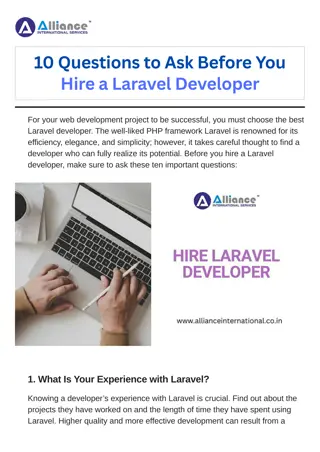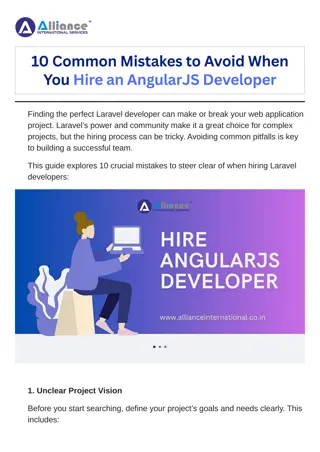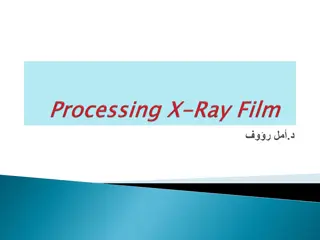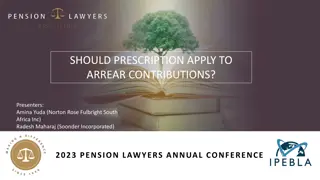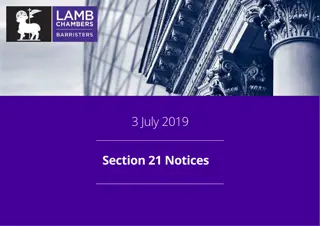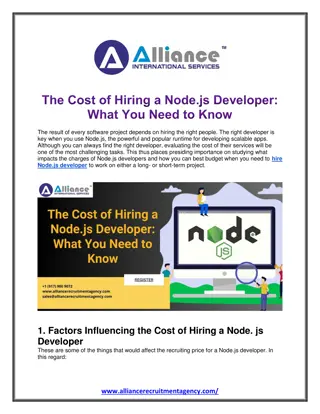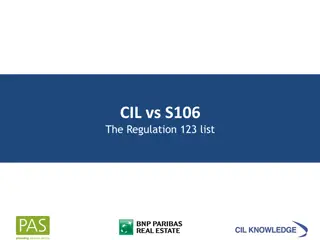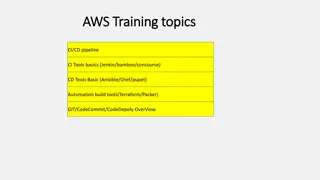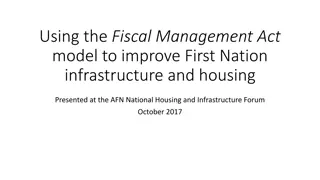Understanding Section 106 Developer Contributions and Infrastructure Delivery
Explore the origins of Section 106 laws, statutory tests, setting formulae, negotiation tips, and the relationship with Community Infrastructure Levy. Learn about the history, rules, and strategies involved in implementing Section 106 agreements for planning gain in development projects.
Download Presentation

Please find below an Image/Link to download the presentation.
The content on the website is provided AS IS for your information and personal use only. It may not be sold, licensed, or shared on other websites without obtaining consent from the author. Download presentation by click this link. If you encounter any issues during the download, it is possible that the publisher has removed the file from their server.
E N D
Presentation Transcript
S106, Developer Contributions & Delivering Infrastructure Mike Kiely Director of Planning LB Croydon Chair Planning Officers Society
S106 Origins The history of various compensation and betterment laws is not a happy one, as generally they have not been successful. The main milestones have been: The Uthwatt Committee into compensation and betterment (1942) The 1947 Planning Act, introduced a development charge to capture planning gain abolished by the 1954 Town and Country Planning Act Compulsory Purchase Act 1965 introduces compulsory purchase provisions Town and Country Planning Act 1971 introduced S52 agreements (now S106 of 1990 Act) Community Land Act 1975 allowed for the taking into public control of development land Development Land Tax Act 1976 attempted to tax development value from land
S106 Rules Statutory tests (Reg 122 of 2010 CIL Regs as amended): Necessary to make the development acceptable in planning terms Directly related to the development Fairly and reasonably related in scale and kind to the development What they can do: Mitigating harm (eg highway works or education & health contributions) Compensating for loss (eg public open space and play equipment) Properly controlling the development (eg securing social housing element or provision of a new bridge within the development) Relationship with CIL: Regulation 123 List of infrastructure items Pooling restrictions (post March 2015 from 2010 )
Setting formulae Works well when there is a close relationship between development generally and the need for additional infrastructure Having formulae makes the negotiation process much easier You must demonstrate two things: There is no existing capacity that can serve the development The development creates the need for that infrastructure HUDU model in London The benefits of publishing your approach
Negotiation tips Start negotiations as early as possible Frontloading contributions reduces the potential S106 pot Viability: the three most important things to remember: It s an opinion and not a fact despite what RICS will have you think It s dynamic the numbers will change over time Impacts still have to be mitigated its not a get-out-of-jail- free card
Getting it drafted & signed Negotiate the heads of agreement in pre-application stage Draft the agreement in the application stage so it s ready to sign once a decision is taken Use the Planning Bar proforma for the main body and publish your obligation proforma on your website Be firm with your lawyers and if necessary get the applicant to do the same they can waste a lot of time arguing about marginal issues Developers can take their foot off the metal once a scheme has been to planning committee Having a resolution That, if by [X date] the legal agreement has not been completed, the Director of Planning is delegated authority to refuse planning permission will focus their attention, provided you stick to it!
Collecting the cash You MUST monitor your S106 agreements so that you know what you are owed and when Monitoring also enables you to manage the number of pooled contributions when CIL is in place Since putting this in place in Croydon we have recovered circa 3.5M that was owed to us A simple set of proforma letters will often work without the need to get heavy with solicitors, especially when interest and indexation is attached to the agreement.
Spending the money Bizarrely, this seems to be the hardest bit It is a whole Council task Set up a body (Infrastructure Finance Group) that can act as the place where these discussions take place and ensure conformity with the S106 agreement and legislation It s about delivering your Council s strategic capital priorities and the Infrastructure Delivery Plan that supports your Local Plan Also involves engagement with third parties who have responsibility for delivering infrastructure
Review & monitoring Authority s Monitoring Report You must report collection and spending of CIL Reporting (voluntarily) collection and spending of S106 is a very good discipline Whilst increased development values may enable you to increase your CIL rates, being able to negotiate a greater affordable housing contribution may be a better policy option What are your plans for S106 post March 2015?
S106 & CIL CIL was introduced as a solution to S106 with provisions in the legislation that sought to put a spanner in the works of S106 (ie the limits on pooling) CIL and S106 are good at different things: CIL is an efficient up-front pooling mechanism brings in more money to an LPA because nearly everyone pays something, rather than just a few paying; as little as 7% of developments have S106 however, CIL does have a high set-up cost that can make it uneconomic for many small local planning authorities to implement. S106 can be a good, flexible tool to deal with specific issues that are related to the actual development, rather than development generally however, S106 does have high transaction costs (eg legal fees and negotiation time) that render it uneconomic for small developments.
The challenges INFRASTRUCTURE OTHER (NON-INFRASTRUCTURE) MITIGATION Infrastructure that is necessary because the need for it is caused by a particular development or group of developments Mitigation or compensation that is necessary to enable a development to proceed Securing affordable housing to meet the housing needs of an area Infrastructure that is necessary because of development generally
How might we fix it? POS believes that any solution should have the following characteristics: The intention for CIL to be funded via the land value rather than through development finance should be clearly stated by government and become a clear feature of the CIL setting process and Development Management viability assessments There should be a basic national levy rate that can be easily adopted Alternative levy rates should follow the current CIL setting process Flexibility between levy and agreements should be a standard feature of the system subject always to the levy amount being the minimum payable in any circumstances A new combined system needs a new name to give it a fresh start
What would it look like? INFRASTRUCTURE OTHER (NON-INFRASTRUCTURE) MITIGATION Infrastructure that is necessary because the need for it is caused by a particular development or group of developments Mitigation or compensation that is necessary to enable a development to proceed Securing affordable housing to meet the housing needs of an area Infrastructure that is necessary because of development generally Development Management Levy Development Management Agreement
Options for levy LPAs For non-major development, a compulsory levy would apply for infrastructure. An agreement could apply to: Mitigation or compensation that is directly necessary to enable a development to proceed Securing affordable housing For major development, the levy would apply plus an agreement to secure: Infrastructure that is necessary because the need for it is caused by a particular development or group of developments Mitigation or compensation that is directly necessary to enable a development to proceed Securing affordable housing Plus if the LPA considered it appropriate adjustment could be made in response to viability issues between the levy and the agreement, subject always to the levy sum being the minimum payable.
Options for non-levy LPAs For non-major development, neither the levy nor an agreement would apply for infrastructure. An agreement could apply to: Mitigation or compensation that is directly necessary to enable a development to proceed Securing affordable housing For major developments, an agreement to secure: Infrastructure that is necessary because the need for it is caused by a particular development or group of developments Mitigation or compensation that is directly necessary to enable a development to proceed Securing affordable housing







